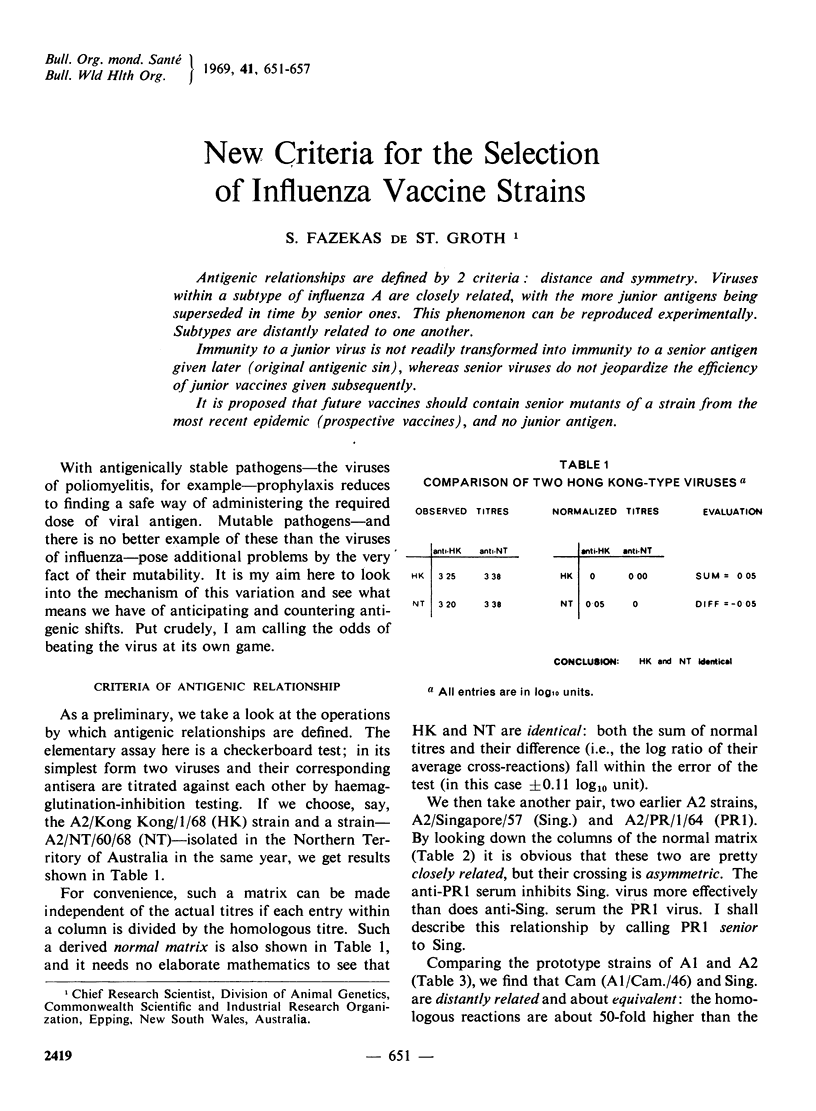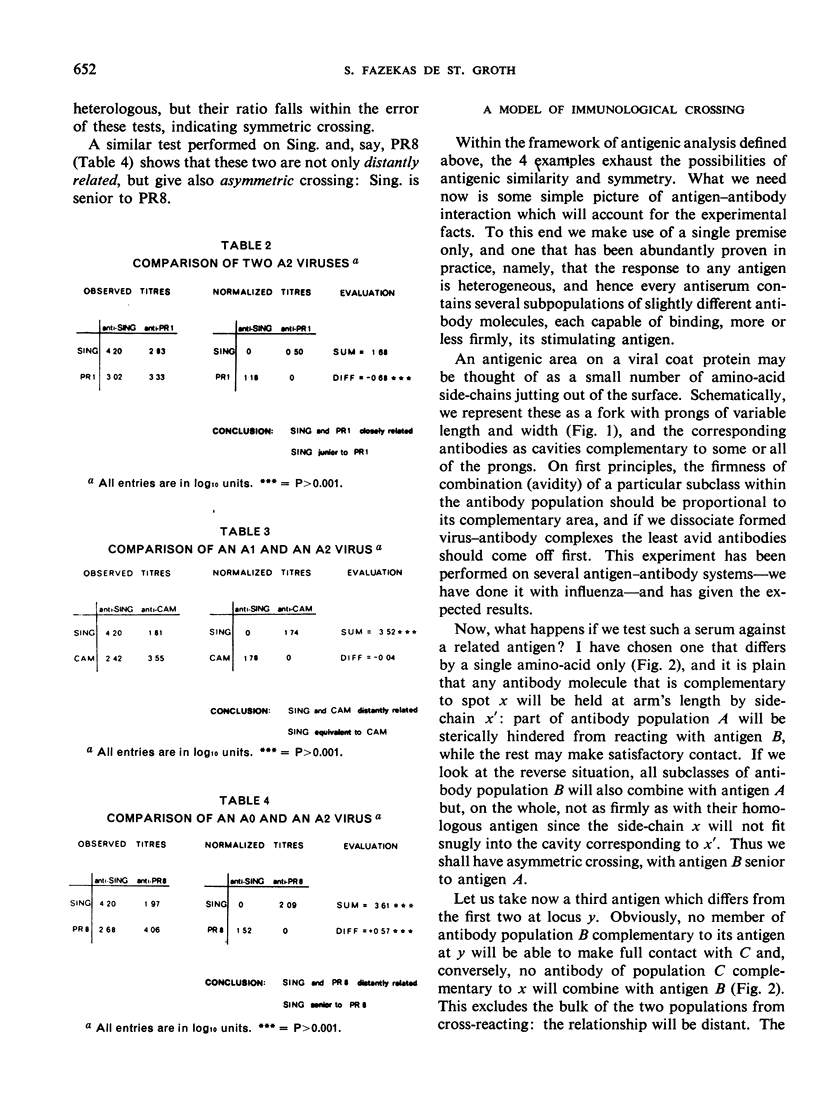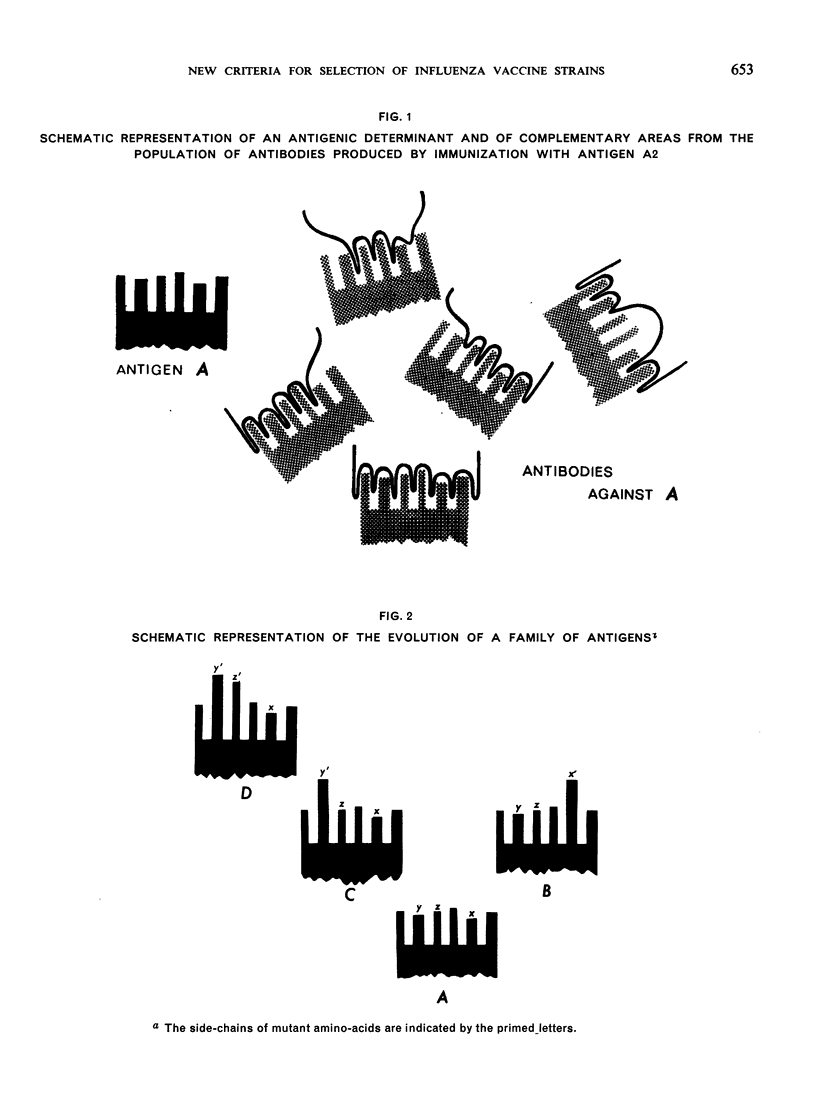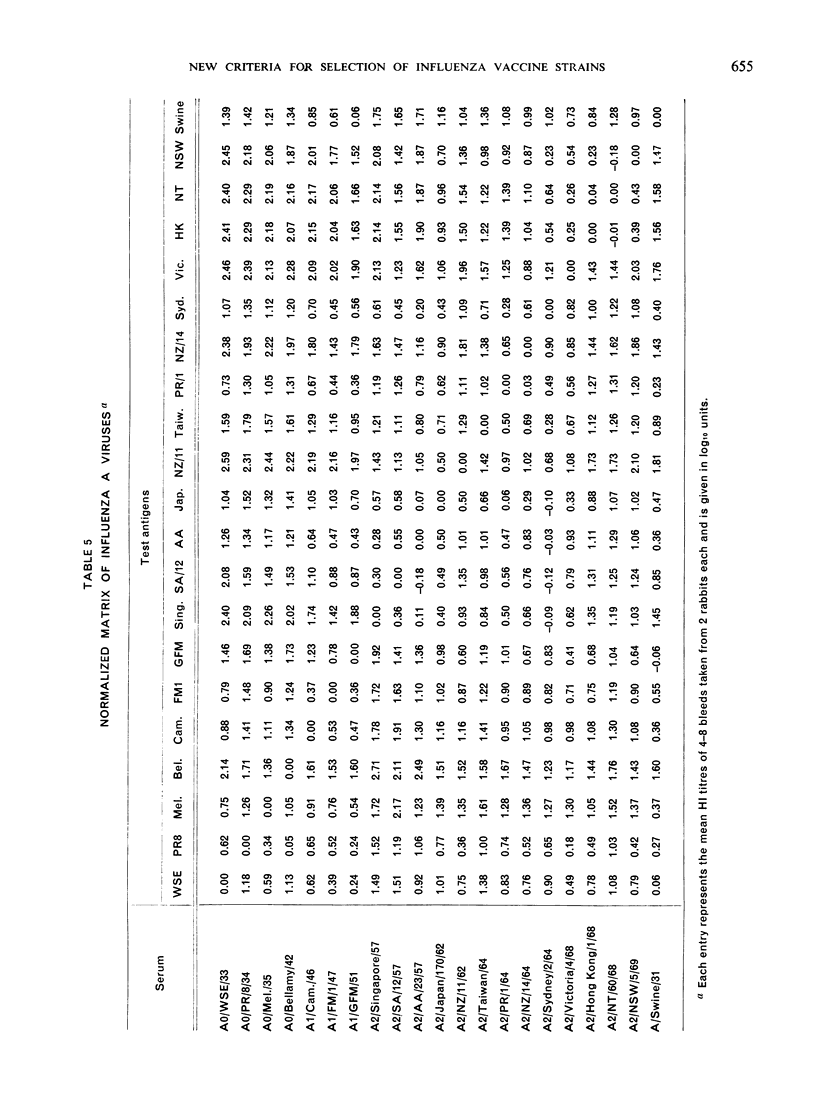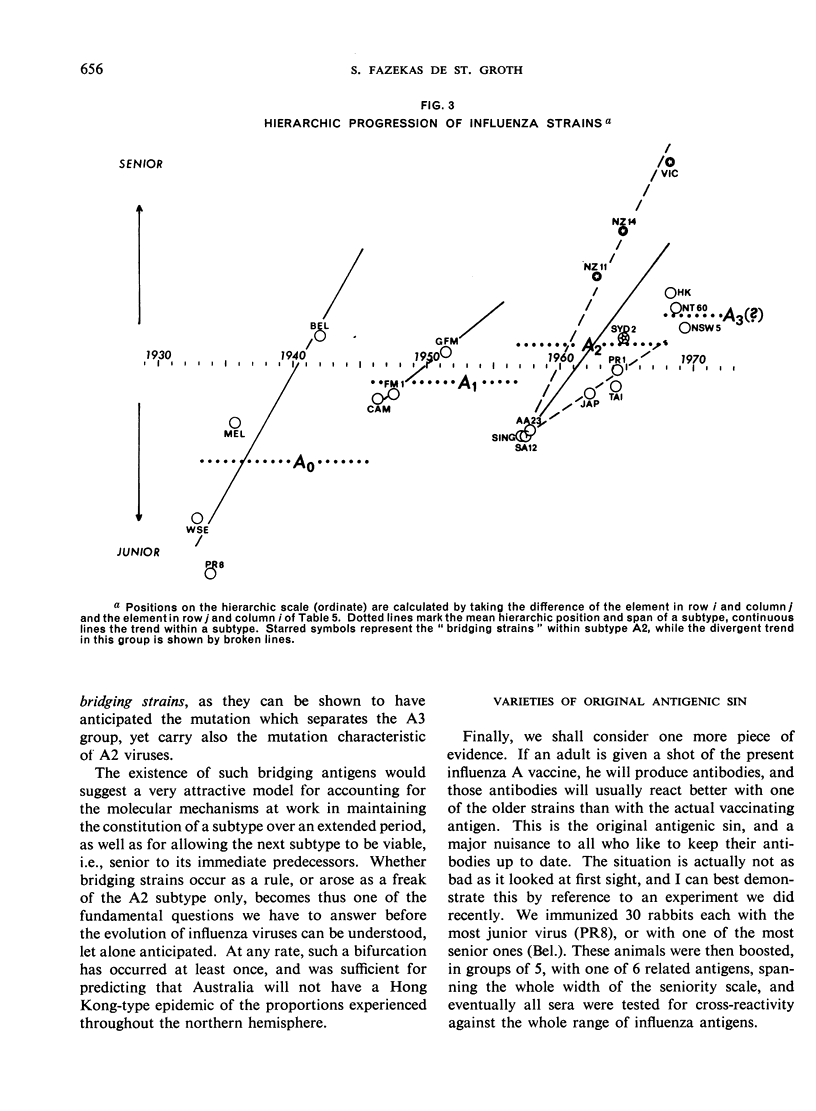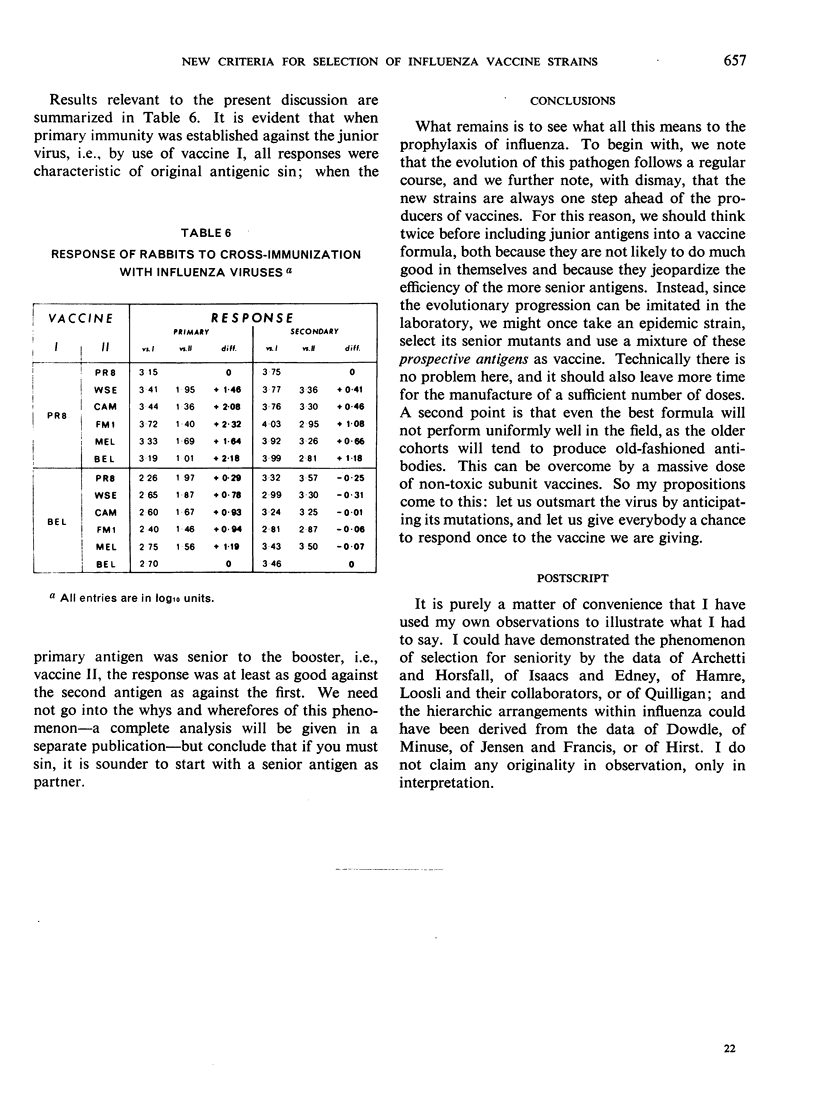Abstract
Antigenic relationships are defined by 2 criteria: distance and symmetry. Viruses within a subtype of influenza A are closely related, with the more junior antigens being superseded in time by senior ones. This phenomenon can be reproduced experimentally. Subtypes are distantly related to one another.
Immunity to a junior virus is not readily transformed into immunity to a senior antigen given later (original antigenic sin), whereas senior viruses do not jeopardize the efficiency of junior vaccines given subsequently.
It is proposed that future vaccines should contain senior mutants of a strain from the most recent epidemic (prospective vaccines), and no junior antigen.
Full text
PDF